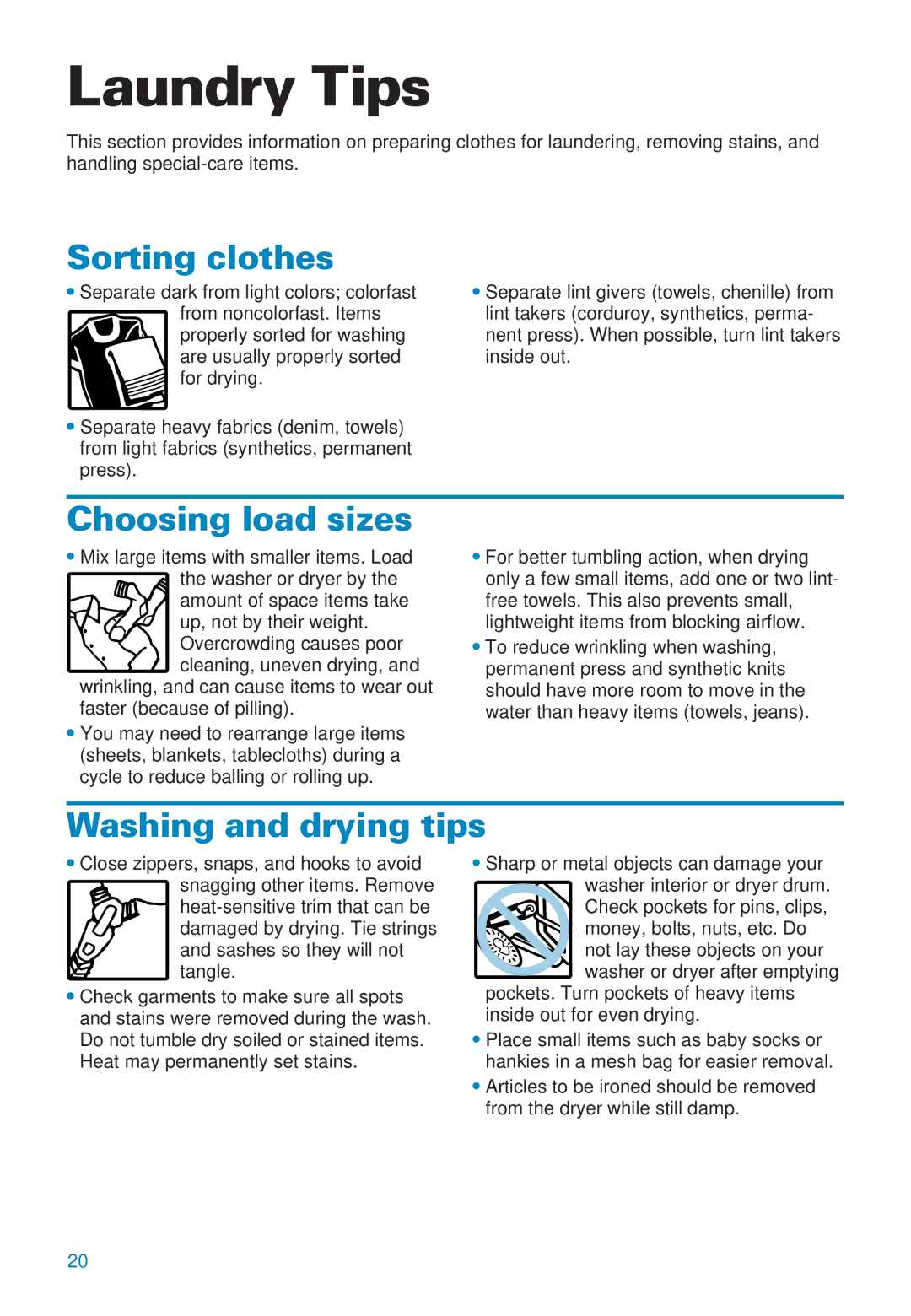
Laundry Tips
This section provides information on preparing clothes for laundering, removing stains, and handling
Sorting clothes
•Separate dark from light colors; colorfast
from noncolorfast. Items properly sorted for washing ![]()
![]() are usually properly sorted
are usually properly sorted ![]() for drying.
for drying.
•Separate heavy fabrics (denim, towels) from light fabrics (synthetics, permanent press).
•Separate lint givers (towels, chenille) from lint takers (corduroy, synthetics, perma- nent press). When possible, turn lint takers inside out.
Choosing load sizes
•Mix large items with smaller items. Load
![]() the washer or dryer by the
the washer or dryer by the
amount of space items take
up, not by their weight.
Overcrowding causes poor cleaning, uneven drying, and
wrinkling, and can cause items to wear out faster (because of pilling).
•You may need to rearrange large items (sheets, blankets, tablecloths) during a cycle to reduce balling or rolling up.
•For better tumbling action, when drying only a few small items, add one or two lint- free towels. This also prevents small, lightweight items from blocking airflow.
•To reduce wrinkling when washing, permanent press and synthetic knits should have more room to move in the water than heavy items (towels, jeans).
Washing and drying tips
•Close zippers, snaps, and hooks to avoid snagging other items. Remove
•Check garments to make sure all spots and stains were removed during the wash. Do not tumble dry soiled or stained items. Heat may permanently set stains.
•Sharp or metal objects can damage your washer interior or dryer drum.
Check pockets for pins, clips,
money, bolts, nuts, etc. Do
not lay these objects on your washer or dryer after emptying
pockets. Turn pockets of heavy items inside out for even drying.
•Place small items such as baby socks or hankies in a mesh bag for easier removal.
•Articles to be ironed should be removed from the dryer while still damp.
20
